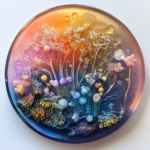When Choosing Resin Coasters, key Factors to Consider For sc…
When Choosing Resin Coasters, key Factors to Consider
For scratch-resistant surface areas, look to polyurethane resin. Curing Time:
Epoxy resin cures treatments slowest (up to 72 hours), whereas polyurethane and polyester cure faster. Choosing the ideal material lines up with your task’s requirements: clarity, warm resistance, or cost-efficiency.
For scratch-resistant surface areas, look to polyurethane resin. Warm Resistance:
Epoxy resins may might handle manage temperatures well, while polyurethane and polyester excel succeed. Quality and Aesthetics:
Epoxy resin stands out with a crystal-clear finish, perfect for vibrant, decorative designsStyles Healing Time:
Epoxy resin material the slowest (up to 72 hours), whereas polyurethane and polyester cure fasterQuicker Picking the ideal material straightens with your task’s needs: clarity, warm resistance, or cost-efficiency.

Leave a Reply